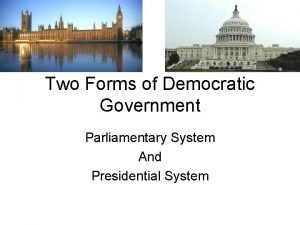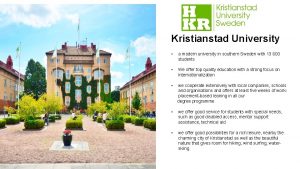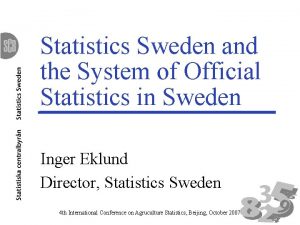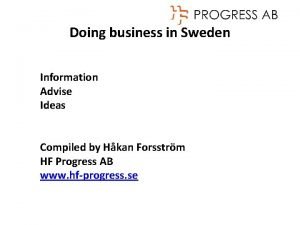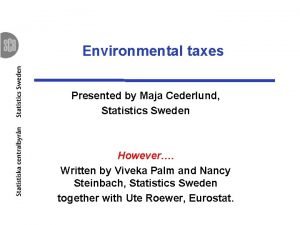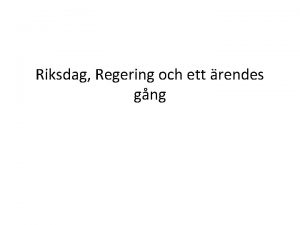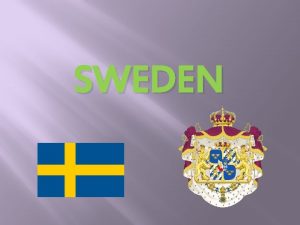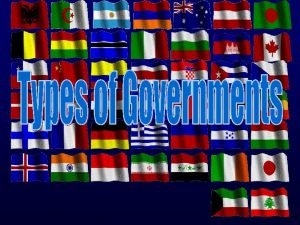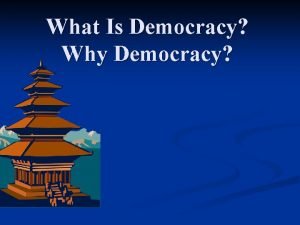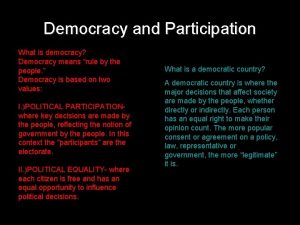Democracy in Sweden CanadaSweden n n n Riksdag








- Slides: 8

Democracy in Sweden

Canada/Sweden n n n Riksdag (Swedish Parliament) Upper house abolished in 1971 Prime minister Council of State (cabinet) Fixed term elections (every fourth year on the 3 rd Sunday of September) Eight major parties, Social Democratic Labour Party, Centre Party, Conservative Party, Liberal Party, Communist Party, Green Party and New Democracy Party

Politics of Consent n n Opposition parties do not oppose the government, but negotiate, bargain and compromise. Parliament consists of combination of interest groups/leaders being elected to government.

Method of election n n Constituency Single member constituency Run-off system (Russia and France) Proportional representation n n Seats are distributed according to voting percentage Before election, party publishes a list of candidates according to preference


Proportional Representation: Advantages n n n Political parties are discouraged from directing appeal to narrow segments of society. Proportional representation allows different sectors to gain representation in Parliament First past the post allows candidates with less than 50% of vote to be elected.

Proportional Representation in Sweden n n Multi seat constituencies Electorate votes for political parties Parties may nominate as many candidates as number of seats in riding. (310 seats) Additional seats (39) distributed according to national results to compensate for regional disparity Each party must have 12% constituency vote or 4% national vote to have representation in Riksdag

Single member constituency n Sweden votes are for parties, not individuals n n n Lack of incentive for members to be responsible to constituency Political party exerts more control over candidates (put to bottom of election list) SMCs produce stable majority governments Proportional governments could be made up of parties the electorate could dislike PR encourages creation of numerous narrow interest parties
